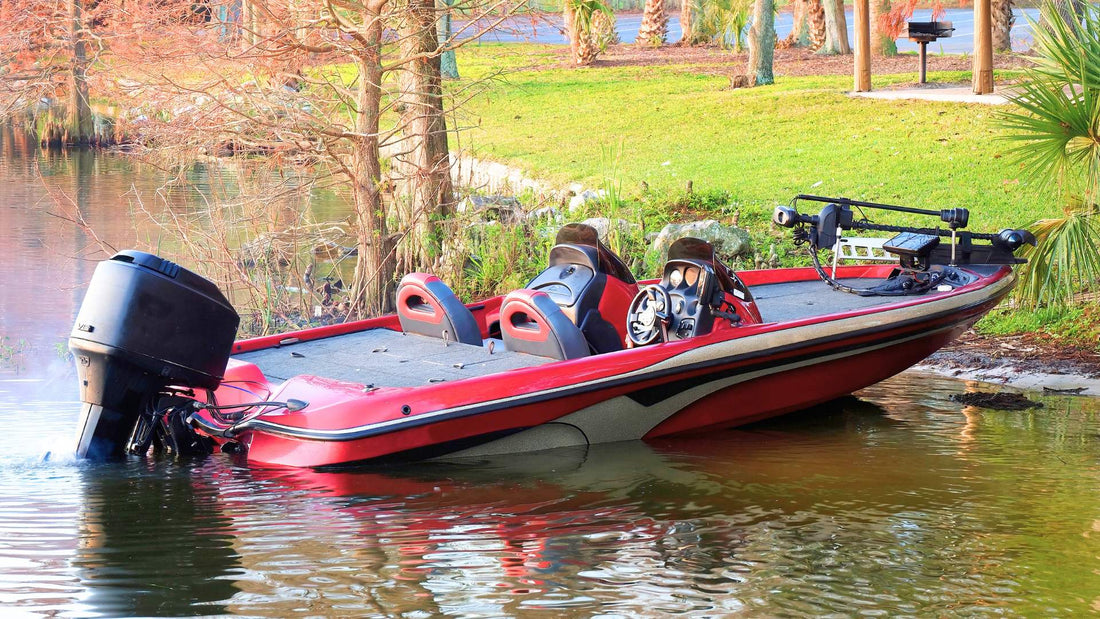
Essential Bass Boat Safety Tips for Anglers to Stay Safe on the Water
Nicholas HeislerShare
Bass fishing from a boat is an exhilarating experience that combines skill, patience, and a love for the great outdoors. Whether you're a seasoned angler or a weekend warrior, ensuring safety on the water should always be your top priority. Bass boats are built for speed and efficiency, but without proper safety precautions, a fun day on the lake can quickly turn dangerous.
From pre-trip inspections to handling emergencies, this guide covers essential bass boat safety tips to keep you and your passengers safe. By following these best practices, you can enjoy a smooth, worry-free fishing trip every time.
1. Pre-Trip Preparations
a. Inspecting Your Bass Boat
Before launching, conduct a thorough boat inspection to ensure everything is in working order. Key things to check:
- Hull Integrity: Look for cracks, leaks, or damage.
- Fuel & Oil Levels: Ensure the tank is full and there are no leaks.
- Battery Charge: Make sure your battery is fully charged.
- Steering & Throttle: Test them before getting on the water.
- Bilge Pump: Ensure it's working properly to prevent flooding.
A well-maintained boat is less likely to break down and more reliable in emergency situations.
b. Assembling Essential Safety Gear
According to the U.S. Coast Guard, every vessel should carry essential safety equipment, including:
- U.S. Coast Guard-approved life jackets for all passengers
- Throwable flotation devices
- Fire extinguisher
- First aid kit
- Emergency whistle or horn
- Anchor with enough rope
Keeping this gear easily accessible can make a huge difference in an emergency.
c. Reviewing Weather Conditions
Check the weather forecast before heading out. High winds, thunderstorms, or sudden temperature drops can create dangerous conditions. If the weather looks unpredictable, it's best to reschedule your trip.
Use apps like NOAA Weather Radar, Windy, or FishWeather to monitor real-time conditions.
d. Understanding Local Regulations
Different lakes and states have specific boating regulations regarding speed limits, wake zones, and catch limits. Research local laws before launching to avoid fines and ensure compliance.
A boating safety course can also help you understand navigation rules and emergency protocols.
2. On-the-Water Conduct
a. Wearing Life Jackets
Many anglers skip wearing life jackets, but they are lifesavers in emergencies. Always wear a properly fitted U.S. Coast Guard-approved PFD (personal flotation device).
b. Maintaining Situational Awareness
Stay aware of your surroundings at all times. Watch for:
- Other boats, kayakers, and jet skiers
- Shallow water, sandbars, or submerged logs
- Sudden changes in weather conditions
- Wildlife that could cause unexpected movement
c. Proper Weight Distribution
Bass boats are designed for high speeds, but overloaded boats or uneven weight can lead to capsizing. Distribute weight evenly by:
- Placing heavy gear near the center of the boat
- Keeping passengers seated while moving
- Avoiding excessive movements while standing or casting
d. Safe Movement Aboard
Falling overboard is a major risk. Reduce hazards by:
- Keeping the deck clear of tackle boxes and loose gear
- Using non-slip mats
- Avoiding sudden movements when standing up
3. Handling Fishing Equipment Safely
a. Proper Casting Techniques
Casting carelessly can injure passengers or damage gear. Always:
- Check your surroundings before casting
- Avoid casting overhead near others
- Use barbless hooks if fishing in close quarters
b. Organizing Tackle and Gear
A cluttered deck increases the risk of tripping or falling overboard. Keep rods, lures, and tools securely stored when not in use.
c. Safe Use of Fishing Knives
When handling a knife:
- Always cut away from your body
- Keep knives sheathed when not in use
- Use a stable surface for filleting fish
4. Navigational Best Practices
a. Adhering to Boating Laws
Follow navigation rules such as:
- Right-of-way laws: Boats on your right (starboard) have the right-of-way.
- Speed limits: Observe posted speed restrictions.
- No-wake zones: Slow down in designated areas to prevent shoreline erosion and protect smaller vessels.
b. Anchoring Techniques
Improper anchoring can cause boat drift or damage. Follow these steps:
- Lower the anchor slowly into the water.
- Ensure enough rope is released (5-7 times the water depth).
- Tie the anchor securely to the bow, not the stern (to prevent flipping).
c. Speed Management
Operating your boat at a safe speed allows for better reaction time. Reduce speed when:
- Near docks, boats, or swimmers
- Navigating through foggy or low-light conditions
- In narrow channels or high-traffic areas
5. Emergency Preparedness
a. Communication Devices
Carry at least two communication methods:
- A VHF marine radio for emergencies
- A waterproof cell phone with a power bank
b. Man-Overboard Procedures
If someone falls overboard:
- Shout "Man overboard!" to alert the crew.
- Throw a flotation device immediately.
- Turn the boat slowly and approach them from downwind.
- Turn off the engine once nearby and pull them back onboard.
c. Signaling for Help
If stranded, use:
- Orange distress flags
- Handheld flares (only use at night or in extreme distress)
- Whistle or horn blasts (three blasts signal distress)
6. Environmental Responsibility
a. Respecting Wildlife
Maintain a safe distance from nesting birds and fish-spawning areas. Avoid speeding through marshes where fish spawn.
b. Leave No Trace
Dispose of trash, old fishing lines, and bait properly. Bring a designated trash bag and pack out whatever you bring in.
c. Sustainable Fishing Practices
Follow local catch-and-release guidelines to help maintain fish populations. Use circle hooks to reduce fish injuries and handle fish gently before releasing.
Are you prepared for your next fishing trip?
Bass fishing is one of the most rewarding outdoor activities, but safety should never take a backseat. By inspecting your boat, wearing life jackets, following boating laws, and staying prepared for emergencies, you can ensure a fun and accident-free fishing trip.
Whether you're a solo angler or fishing with family, prioritizing safety ensures every trip is a success. Stay safe, respect the water, and enjoy your next bass fishing adventure!
When it comes to keeping your bass boat clean, look to Captains Preferred Products' boat cleaners and chemicals. Find everything you need to keep your boat squeaky clean all season - always at the best prices.
Related Articles:




